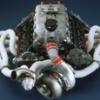Got Over 400kw Atw?
Announcements
-
Similar Content
-
Latest Posts
-
By Dose Pipe Sutututu · Posted
Today, I'm a Breville BES920 tech, new triac board and new 3x way solenoid. Had overheating issues, home RCD tripping when it got warm, and the boiler stayed on when the machine was shut off. Also, usually 3x way solenoid chatter, this is the 3rd time I'm replacing it. Mind you, this machine is 9 year old and send it every day doing at minimum 3x double shots. When the in laws come over to took after my daughter, it will easily see 6x double shots in a single day. Tried to be somewhat compliant, crimped and then used a screw connector over the top. Would have preferred to use heat shrinks. After all that, turns out all the overheating has damaged the o-rings to the steam tap as well. Ordered new ones, coming soon. -
Still got it- First time checking sau in a while ahhaha
-
I don't know about that. I can hoon my R32 around - hard launches, high lateral Gs - with <<1/4 tank without any such shenanigans. This with the previous 040 and the current GSS342. I would suspect a fuel line problem. One of the hoses associated with the top of the tank perhaps.
-
By funkymonkey · Posted
This is amazing. Love that you’re giving the boys an intro to cars and off the screens. They probably have an insta for the car and build posts on TikTok for their mates. -
By Murray_Calavera · Posted
It is. Your car works fine with the tank full. If you drive like a Nana it works fine. You give it a boot full with half a fuel tank, you get surge. It 100% is a fuel surge issue. Maybe have a look at installing a Hydramat if you don't want to install a surge tank. https://www.holley.com/products/fuel_systems/hydramat/
-






Recommended Posts
Create an account or sign in to comment
You need to be a member in order to leave a comment
Create an account
Sign up for a new account in our community. It's easy!
Register a new accountSign in
Already have an account? Sign in here.
Sign In Now